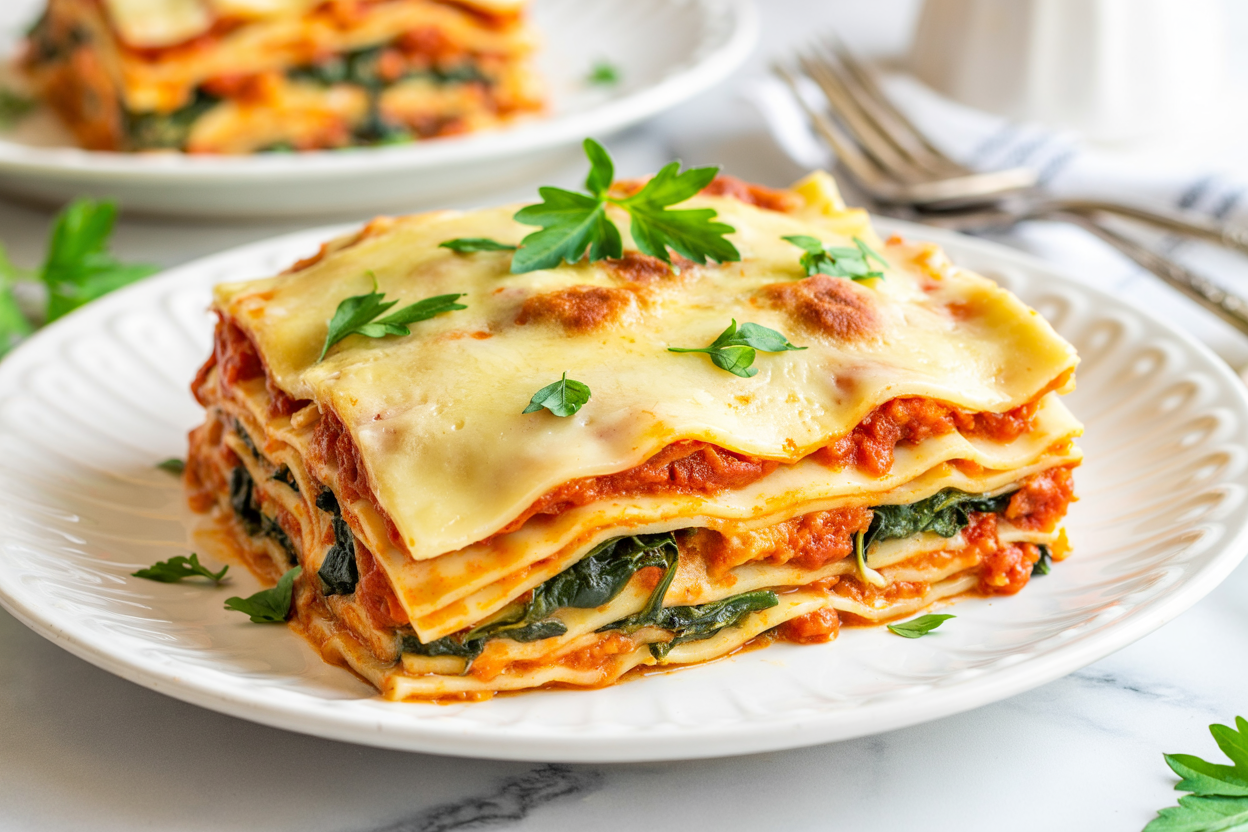Introduction:
Are you interested in growing your own food at home in a sustainable and efficient way? If so, then aquaponics might be the perfect solution for you! Aquaponics combines aquaculture (raising fish) and hydroponics (growing plants without soil) in a symbiotic environment. In this article, we will explore 12 DIY aquaponics systems and plans that you can use to set up your own aquaponics system at home. By utilizing these systems, you can enjoy fresh, organic produce while also reducing your environmental impact. Let’s dive into the world of aquaponics and start growing your own food today!
1. DIY Hobby Aquaponics System
Creating a DIY hobby aquaponics system can be a rewarding and sustainable way to grow plants and raise fish at home. By combining hydroponics with aquaculture, this system uses the waste produced by fish to fertilize plants, creating a symbiotic relationship that benefits both. With some basic materials and a little bit of know-how, hobbyists can set up their own small-scale aquaponics system to enjoy fresh produce and the calming presence of aquatic life in their own space. This eco-friendly method of gardening is not only enjoyable but also helps to conserve water and reduce waste, making it a great option for those looking to live a more sustainable lifestyle.

source: www.grozine.com
2. Barrel Aquaponic System
The barrel aquaponic system is a sustainable method of gardening that combines aquaculture (fish farming) with hydroponics (growing plants in water). In this system, water from a fish tank is pumped into a barrel filled with plants, allowing the plants to absorb the nutrients from the fish waste. The plants then filter the water, which is then recirculated back to the fish tank. This closed-loop system is efficient and environmentally friendly, making it a popular choice for home gardeners and urban farmers looking to grow their own food in a small space.
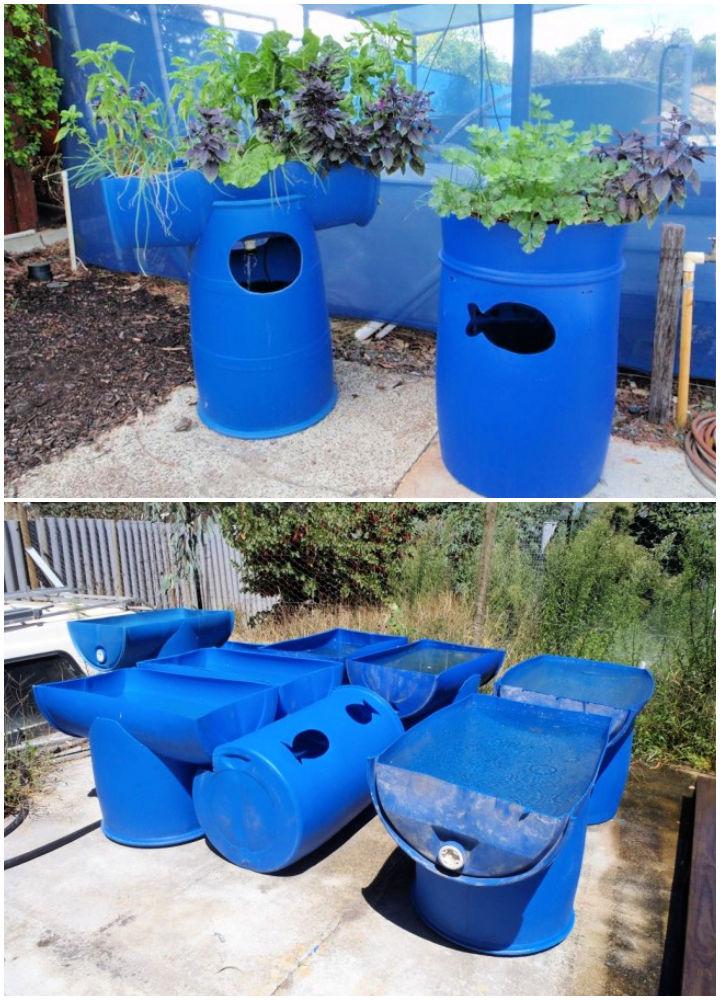
source: www.backyardaquaponics.com
3. DIY Basement Aquaponics
Aquaponics is a sustainable farming method that combines aquaculture (raising fish) with hydroponics (growing plants in water). Setting up a DIY basement aquaponics system can be a fun and rewarding project for those interested in growing their own food year-round. By utilizing a basement space, you can create a controlled environment that is not affected by outdoor weather conditions. With the right equipment and setup, you can cultivate a variety of plants and even raise fish for a complete and efficient ecosystem. This project requires careful planning and maintenance, but the benefits of fresh produce and fish can be well worth the effort.

source: www.instructables.com
4. Aquaponic Garden with Arduino
An aquaponic garden is a sustainable system that combines aquaculture (raising fish) with hydroponics (growing plants without soil). By using an Arduino microcontroller, this system can be automated and monitored to ensure the optimal conditions for both the fish and plants. The Arduino can control the water pumps, sensors for pH and temperature, and even the feeding schedule for the fish. This technology allows for a more efficient and precise management of the aquaponic garden, resulting in healthier fish and thriving plants.
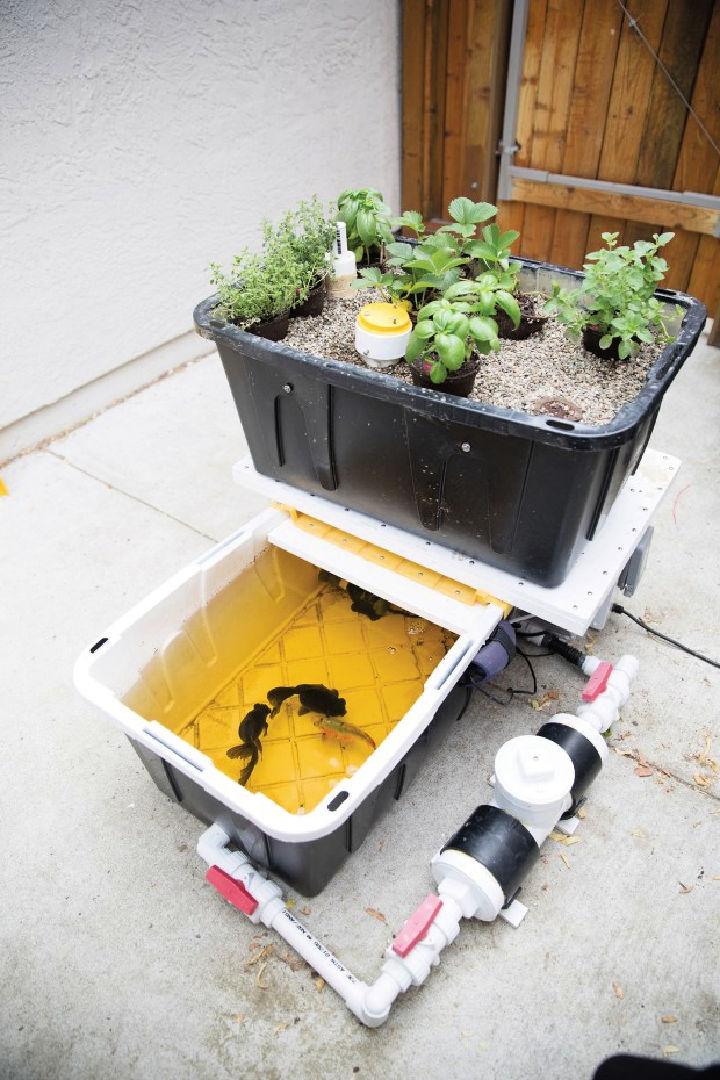
source: makezine.com
5. DIY Aquaponics System Step by Step Tutorial
Building your own aquaponics system can be a rewarding and sustainable way to grow your own food. To start, you will need a fish tank, grow bed, water pump, and tubing. Begin by placing the fish tank in a location with access to natural light. Next, connect the water pump to the fish tank and run tubing from the pump to the grow bed. Fill the grow bed with a growing medium like gravel or clay pellets. Add water to the fish tank and turn on the water pump to start circulating water through the system. Introduce fish to the tank, such as tilapia or goldfish, which will produce waste that fertilizes the plants. Plant vegetables or herbs in the grow bed and watch your aquaponics system thrive as the fish waste feeds the plants and the plants clean the water for the fish.
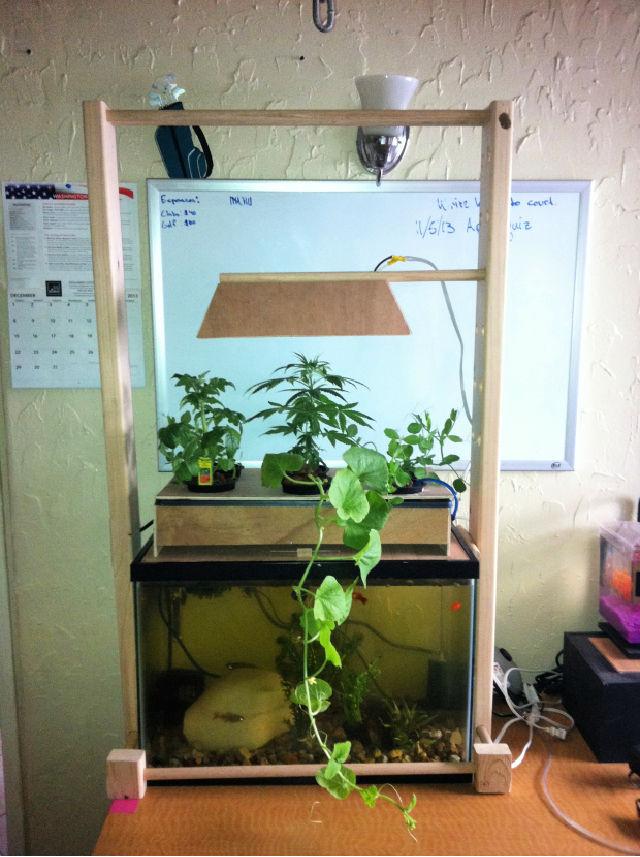
source: mutualisticsymbiosis.wordpress.com
6. Clip Together Bathtub Aquaponics System
The clip together bathtub aquaponics system is a convenient and innovative way to grow plants and raise fish in a small space. This system utilizes a bathtub as the main container, allowing for easy assembly and maintenance. By clipping together various components such as grow beds, fish tanks, and water pumps, users can create a self-sustaining ecosystem that benefits both the plants and fish. This system is ideal for those with limited outdoor space or those looking to incorporate aquaponics into their existing bathtub. With the clip together bathtub aquaponics system, growing your own food and caring for aquatic life has never been easier.
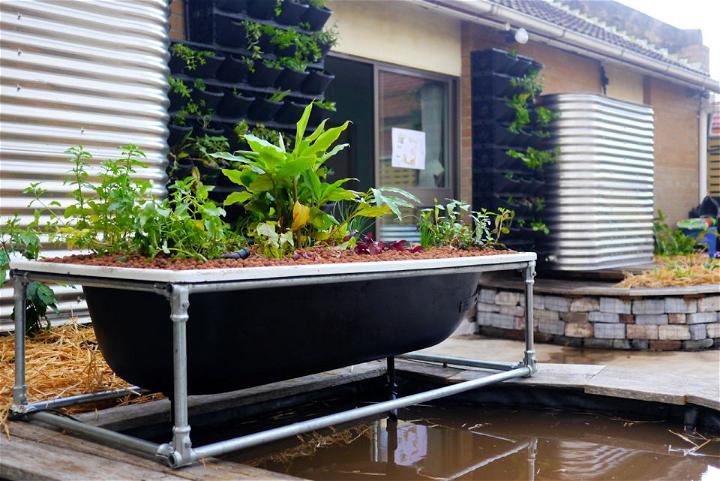
source: www.milkwood.net
7. DIY Simple Indoor Aquaponics
Indoor aquaponics is a sustainable and space-efficient way to grow plants and raise fish at the same time. By combining hydroponics and aquaculture, this system creates a symbiotic environment where the fish waste provides nutrients for the plants, and the plants help filter and purify the water for the fish. Setting up a simple indoor aquaponics system can be achieved with basic materials such as a fish tank, grow bed, water pump, and some plumbing. This DIY project not only allows you to grow fresh produce and raise fish in your own home, but also promotes eco-friendly practices and a deeper understanding of the natural cycles of life.
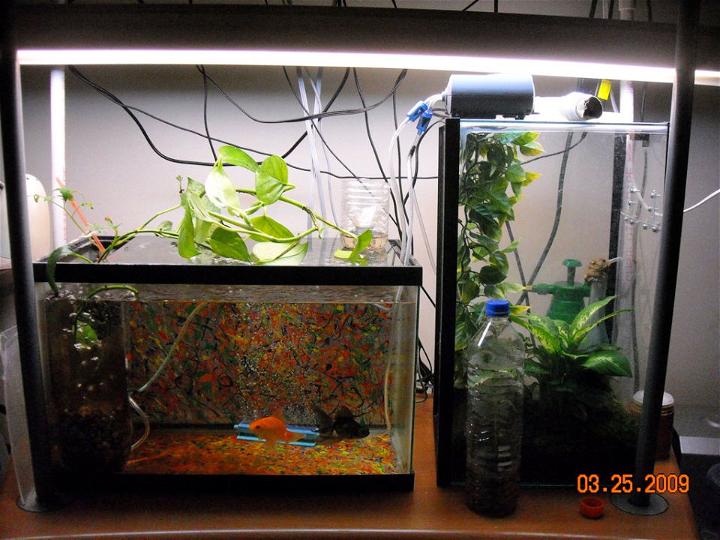
source: www.instructables.com
8. Make Your Own Aquaponic Garden
Creating an aquaponic garden is a sustainable and efficient way to grow plants and fish simultaneously. By combining aquaculture and hydroponics, you can cultivate a variety of vegetables and herbs while also raising fish in a symbiotic environment. The fish waste provides nutrients for the plants, and the plants help to filter and clean the water for the fish. With some basic materials and a little bit of know-how, you can set up your own aquaponic system in your backyard or even indoors. Not only is it a fun and rewarding project, but it also allows you to produce fresh, organic food in a self-contained ecosystem.
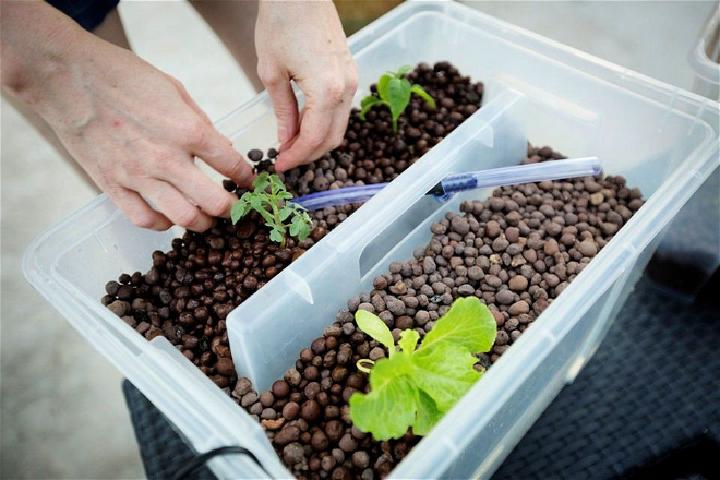
source: www.thebeijinger.com
9. DIY Vertical Aquaponics System
Creating a vertical aquaponics system is a fun and innovative way to grow plants and raise fish in a small space. By combining aquaculture and hydroponics, this system allows for the efficient use of water and nutrients, making it a sustainable option for gardening. With some PVC pipes, a water pump, grow beds, and fish tanks, you can set up your own DIY vertical aquaponics system at home. This setup can be customized to fit your space and needs, providing a unique and rewarding way to grow your own food.
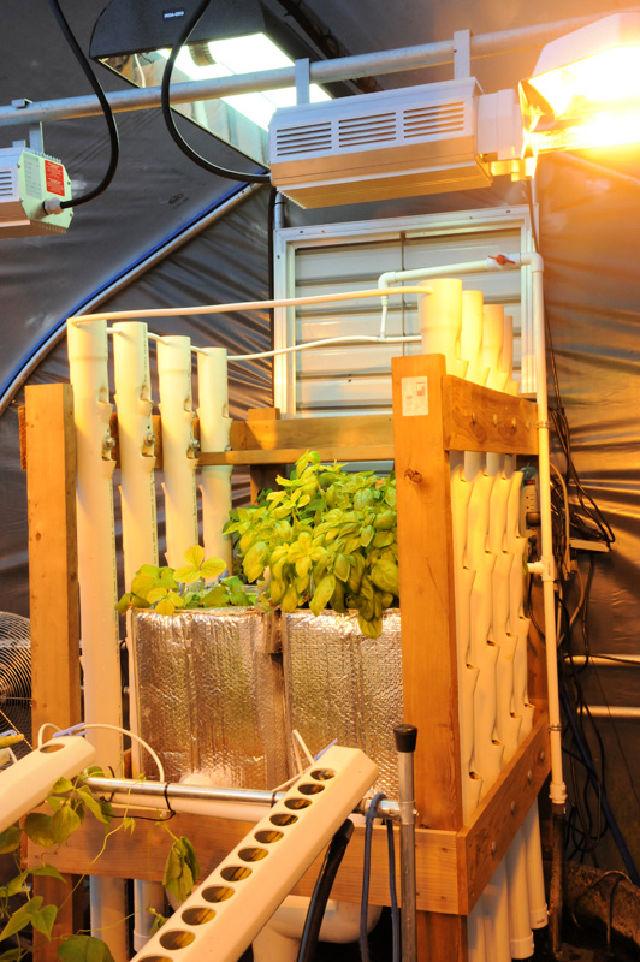
source: sites.google.com
10. Vertical Aquaponics on the Patio
is an innovative way to grow plants and raise fish in a small space. By utilizing vertical structures, such as towers or shelves, aquaponics systems can maximize growing area while conserving space. The plants benefit from the nutrient-rich water provided by the fish, while the plants filter the water for the fish, creating a symbiotic relationship. This method is perfect for urban dwellers or anyone with limited outdoor space, allowing them to enjoy fresh produce and fish right from their own patio.
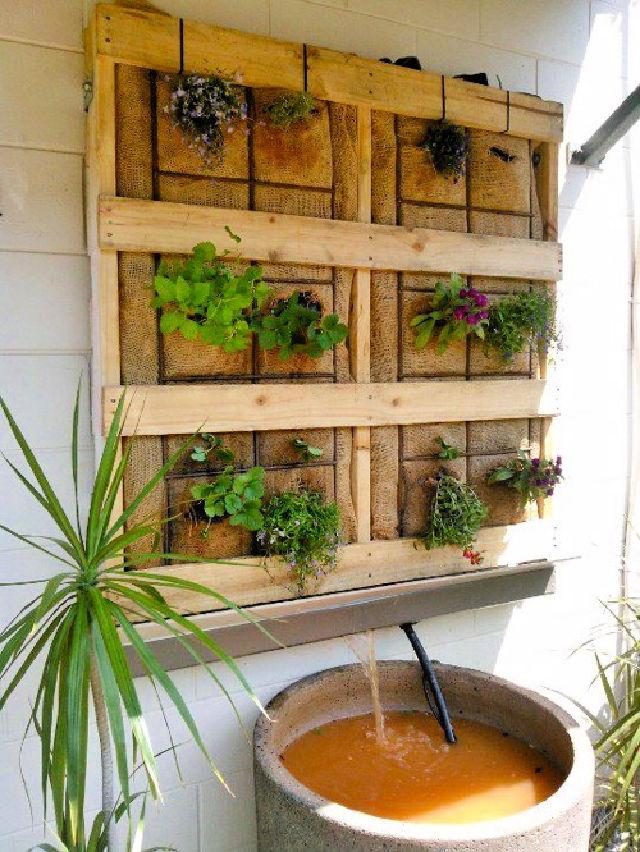
source: www.milkwood.net
11. Indoor Mini Aquaponics System
An indoor mini aquaponics system is a sustainable and space-saving way to grow plants and raise fish right in your own home. This system combines aquaculture (raising fish) and hydroponics (growing plants in water) in a symbiotic environment where the fish waste provides essential nutrients for the plants, and the plants filter and clean the water for the fish. This closed-loop system is easy to set up and maintain, making it a great option for those looking to grow fresh herbs, vegetables, or even small fruits year-round. With the right balance of fish and plants, an indoor mini aquaponics system can be a beautiful and efficient addition to any home.
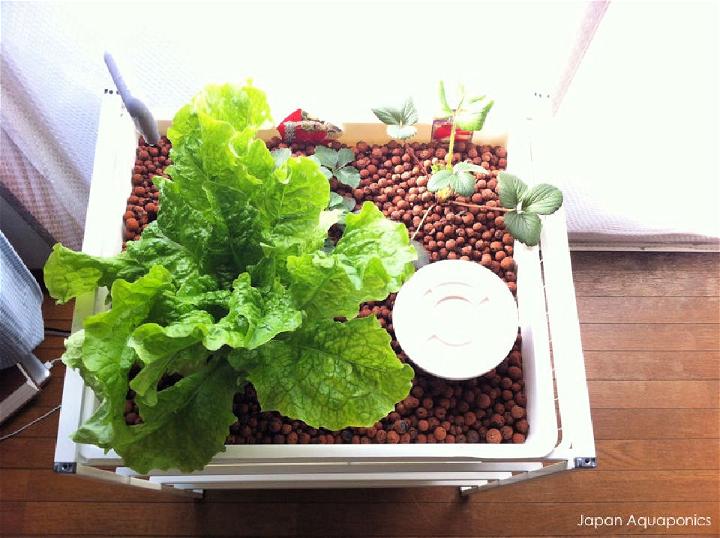
source: www.instructables.com
12. Fish Tank to Aquaponics System
Converting a traditional fish tank into an aquaponics system is a great way to combine aquaculture and hydroponics in a sustainable and efficient manner. In an aquaponics system, fish waste provides nutrients for plants, while the plants purify the water for the fish. This creates a self-sustaining ecosystem where both plants and fish thrive. By making this conversion, hobbyists can enjoy growing their own fresh produce while also maintaining a healthy and beautiful aquatic environment for their fish. It’s a win-win situation that demonstrates the interconnectedness of nature and the benefits of working in harmony with the ecosystem.
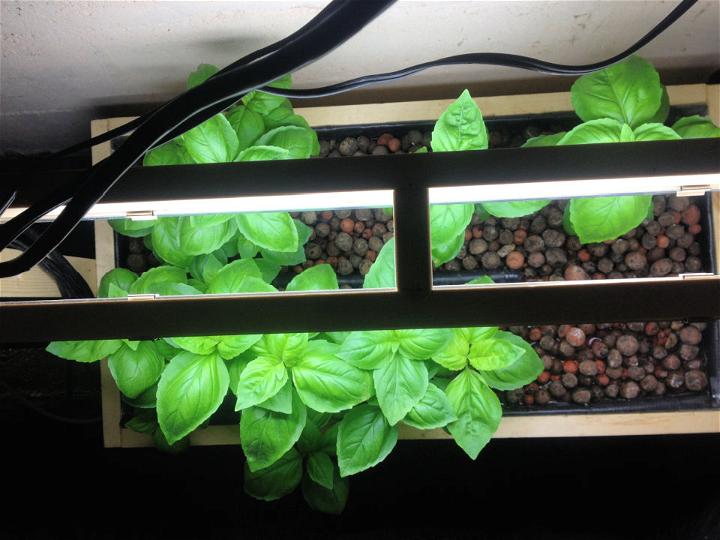
source: dustinbajer.com
FAQ:
1. What is aquaponics?
Aquaponics is a system that combines aquaculture (raising aquatic animals) with hydroponics (growing plants in water) in a symbiotic environment. Fish waste provides nutrients for the plants, and the plants help filter and clean the water for the fish.
2. What are the benefits of setting up a DIY aquaponics system?
Some benefits of DIY aquaponics systems include sustainable food production, water conservation, space efficiency, and reduced need for chemical fertilizers.
3. What types of fish are suitable for aquaponics systems?
Common fish species used in aquaponics systems include tilapia, trout, catfish, and perch. It’s important to choose fish that are well-suited to the environmental conditions of your system.
4. Do I need any prior experience to set up a DIY aquaponics system?
While prior experience in gardening or fishkeeping can be helpful, many DIY aquaponics systems are designed to be beginner-friendly with step-by-step instructions.
Conclusion:
In conclusion, with these 12 DIY aquaponics systems and plans, you can easily grow your own food at home while also enjoying the benefits of a sustainable and environmentally-friendly gardening system. Whether you’re a beginner or have some experience with aquaponics, there is a plan here for everyone. By following these step-by-step guides, you can create your own thriving ecosystem that produces both fish and vegetables. Start your aquaponics journey today and experience the joy of growing your own food right in your own backyard!



